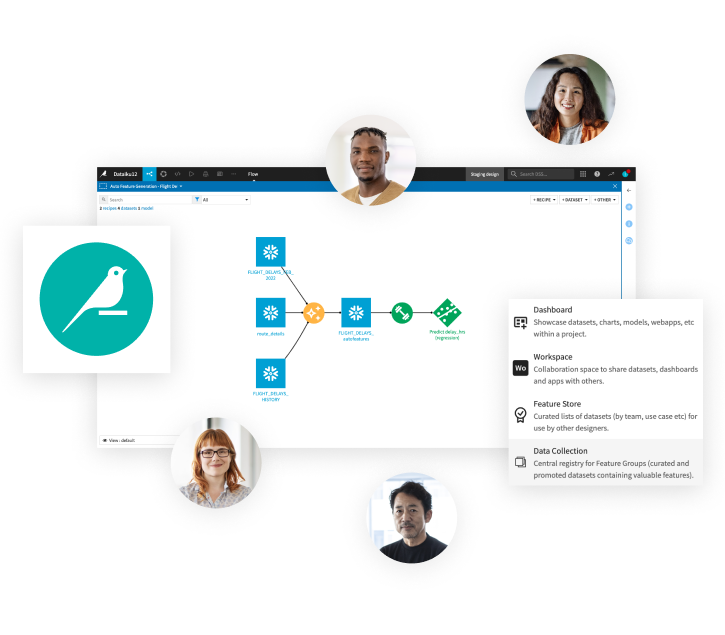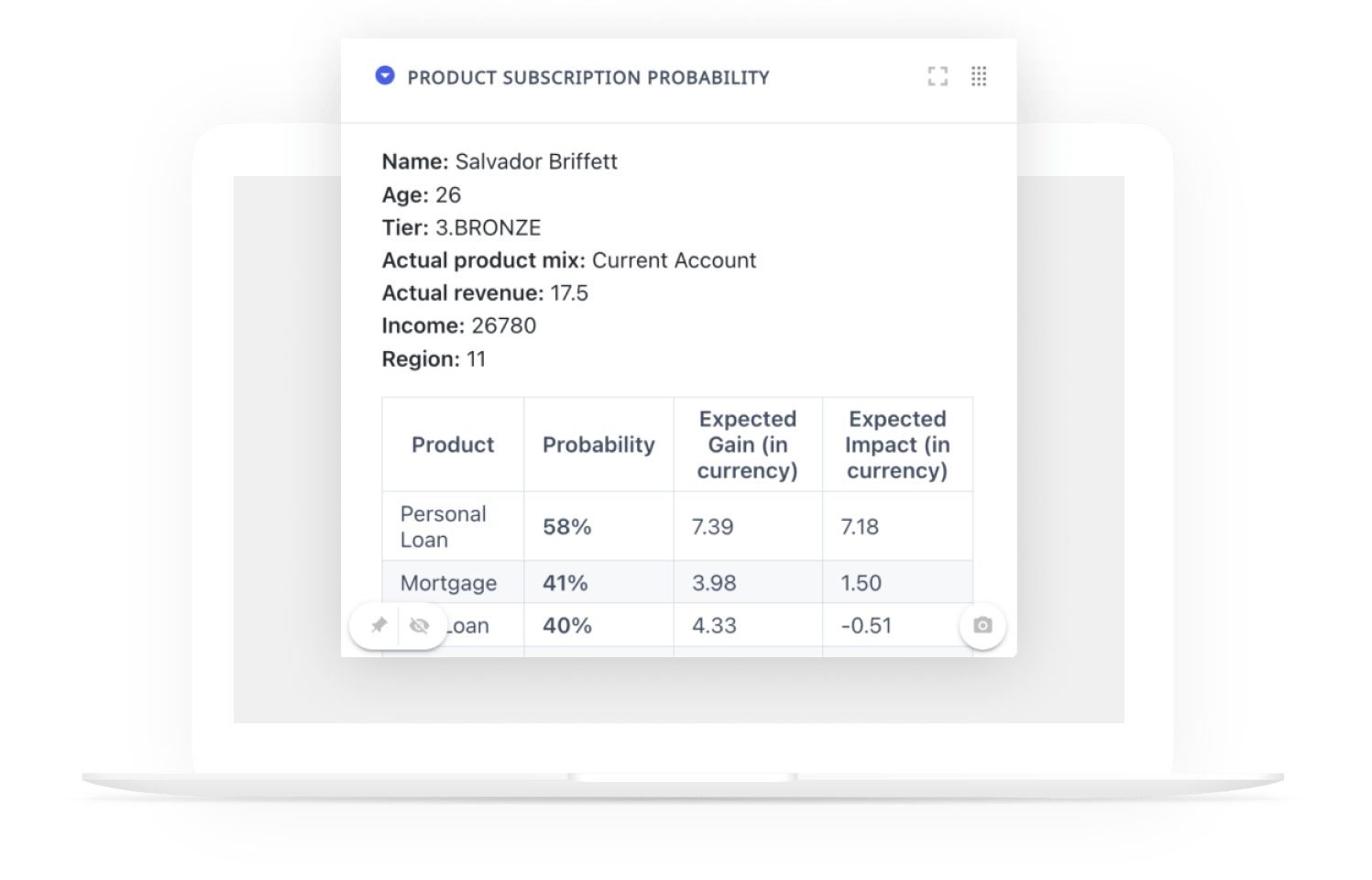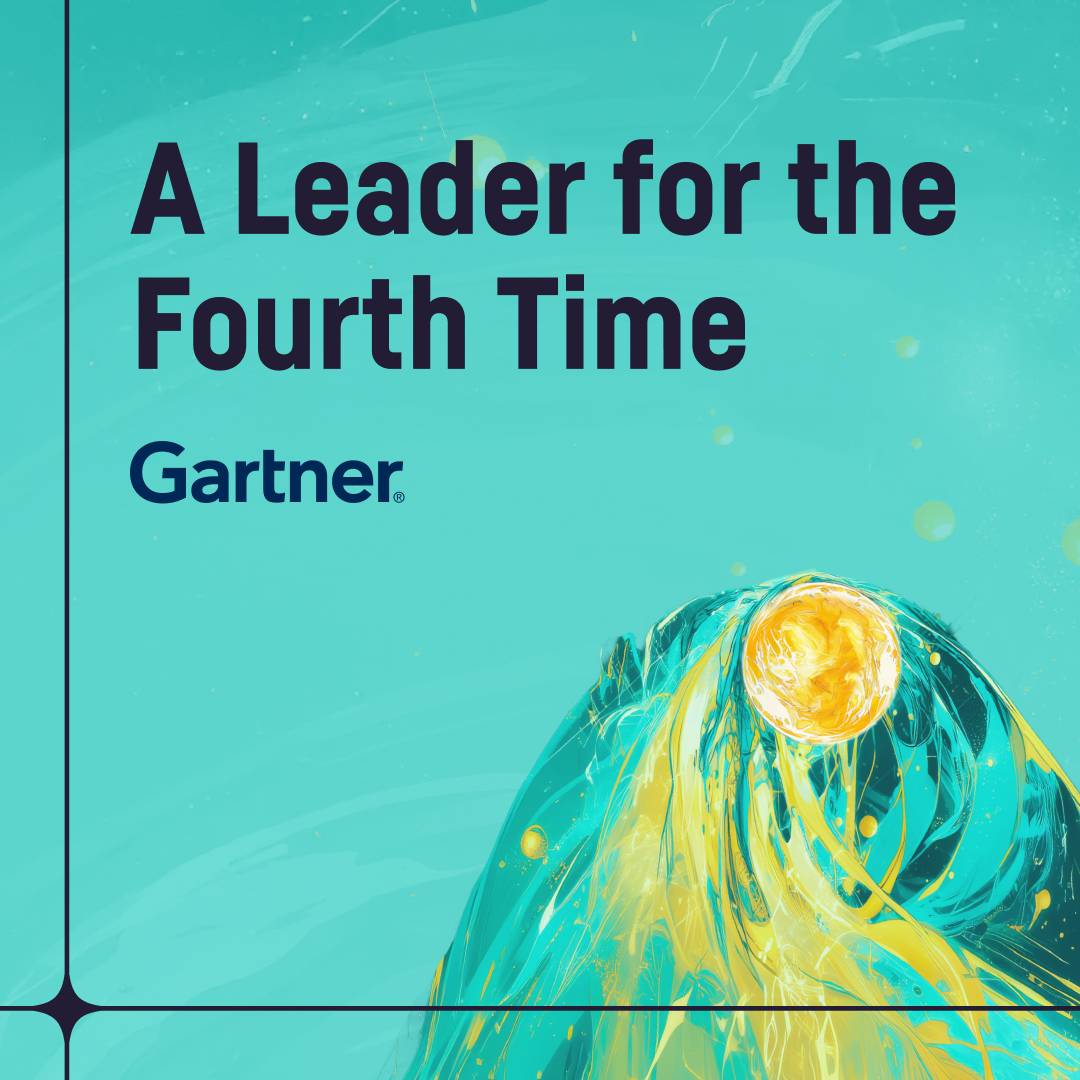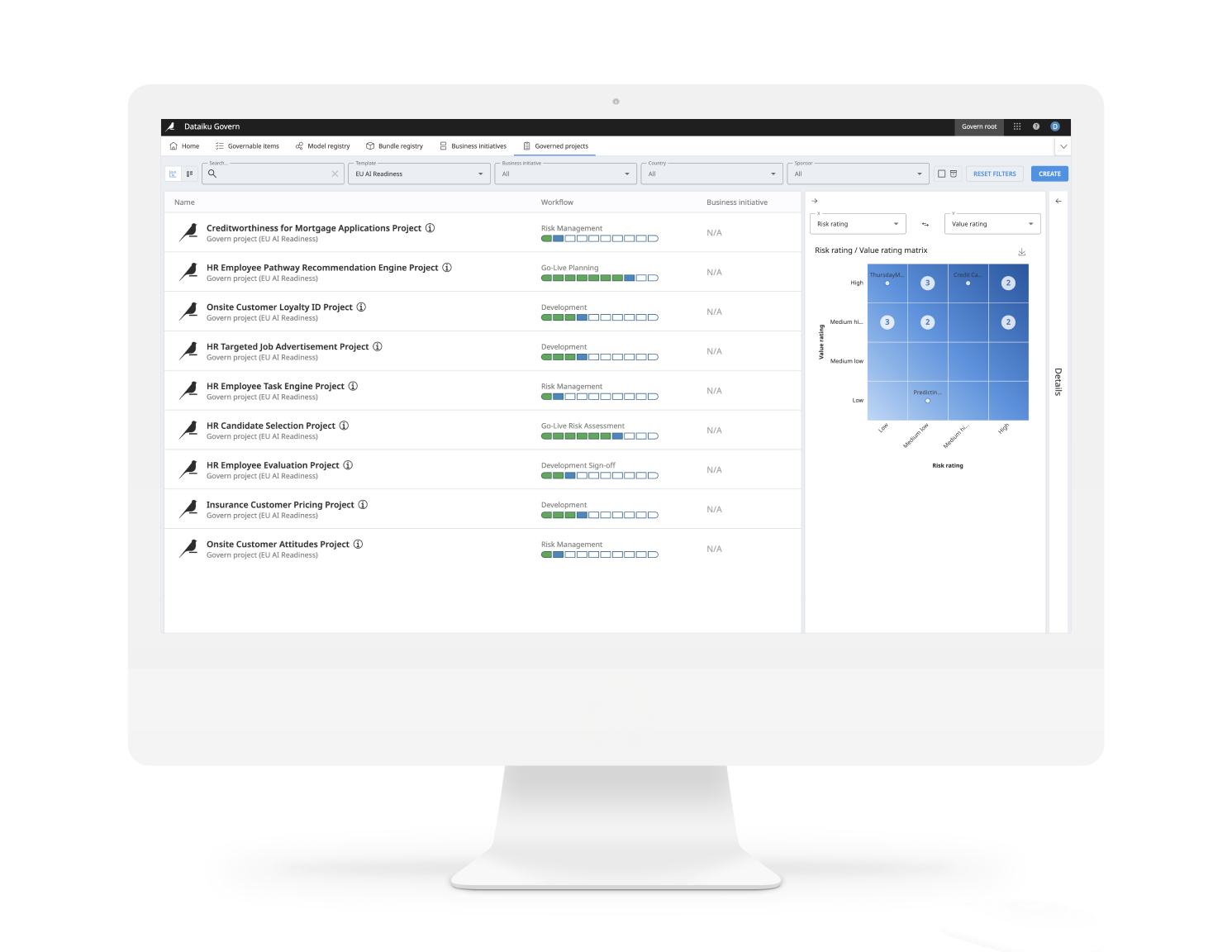Scale With Confidence: Understanding Responsible AI
What Is Responsible AI?
Rapid advancements in the field of generative AI has placed an increased focus on the concept of responsible AI. In just a few short years, the rapid pace of AI advancement is evident — what once took a year to build a single model can now be achieved thousands of times over within the same timeframe, even by average companies. In addition, operationalization at a massive scale has made it possible for a single model to impact millions of decisions (as well as people) across organizations and entire industries.
This increase in the use of AI can present several new risks:
- AI systems can behave in unexpected and inadequate ways in a production environment (as compared to the original design or intent).
- Models may reproduce or amplify biases contained in data.
- AI-generated responses, such as those from large language models (LLMs) like GPT, Claude, or Gemini, can cause harm if they promote unsafe behaviors, disinformation, or inappropriate content (i.e., to underrepresented or marginalized groups).
- More automation might mean fewer opportunities for detecting and correcting mistakes or unfair outcomes.
Even with the increase in the amount of models in production, few companies have dedicated the time and effort to ensure these models are deployed responsibly. At the same time, this isn’t surprising given the context — there is no standard, accepted definition around what exactly responsible AI means or what companies need to do to practice it. Although consultants, tech behemoths like Google, and organizations like Partnership on AI are starting to develop guidelines, they are far from common practice.
responsible AI is the practice of designing, building, and deploying AI in a manner that empowers people and businesses and fairly impacts customers and society — allowing companies to trust and scale AI with confidence. It is a concept that ensures AI outputs are aligned with an organization’s values. responsible AI proactively ensures AI systems are reliable, accountable, fair, transparent, and explainable.
Because the term can be easily misunderstood, let’s cover some common myths about responsible AI principles to bring some clarity about what it means (and doesn’t mean) for businesses and organizations.
Myth 1: Ethical AI vs Responsible AI — The Journey to Responsible AI Ends With the Definition of AI Ethics
One of the biggest misconceptions about responsible AI is that it is just about defining AI ethics principles. However, responsible AI is much wider and more nuanced, including two main dimensions:
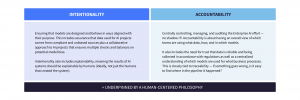
Defining AI ethics is a cornerstone for responsible AI, and it’s no easy feat. The goal is to fully align deliveries with intentions, ensure outputs are fit for purpose, and ensure resilience across all dimensions to support AI initiatives.
When defining ethics, it’s important not to confuse them with biases. Ethics are a set of principles, and bias is just one dimension on which these principles should be applied. For example, a machine learning (ML) model can be completely unbiased while also being unethical (consider an insurance pricing model based on health data) or, on the other hand, ethical but biased (e.g., the risk of gender bias might not pose an ethical problem for a retail clothing recommendation engine, but it’s another story for financial institutions).
Myth 2: Responsible AI Challenges Can Be Solved With a Tools-Only Approach
There’s good news and bad here — the good news is that tools can help organizations execute on a responsible AI strategy. On the accountability front, good MLOps and governance practices are a reasonable start (MLOps is the standardization and streamlining of ML lifecycle management). But it’s not a free lunch; both MLOps and governance take effort, discipline, and time.
Those responsible for governance and MLOps initiatives must manage the inherent tension between different user profiles, striking a balance between getting the job done efficiently and protecting against all possible threats. This balance can be found by assessing the specific risk of each project and matching the governance process to that risk level. There are several dimensions to consider when assessing risk, including:
- The audience for the model
- The lifetime of the model and its outcomes
- The impact of a potential negative outcome
This assessment should determine not only the governance measures applied, but it should also drive the complete MLOps development and deployment tool chain.
Part of the equation for ensuring accountability with AI is tooling as well. For example:
- Traditional statistical approaches can aid teams in uncovering bias in data, as can subpopulation analysis, since an ML model is optimized for a specific outcome metric and it’s rare that it performs consistently across all populations for all evaluation metrics.
- Other tools like feature importance, fairness metrics, or individual prediction explanations (the ability to see down to the individual what factors weighed into a particular prediction or outcome) can be useful.
From an overarching standpoint, data science, ML, AI, and responsible AI platforms (like Dataiku) not only offer many of these features, but they also generally help ensure models are interpretable and transparent. BUT — and this is a big but — tools are not the be-all and end-all when it comes to responsible AI. Tools only exist to support efficient implementation of the processes and principles defined by the people within a company.
In other words, it’s the human that needs to ask why a model made a decision, make the choice to audit how the model changes with different data, and ask the right questions to ensure it meets the organization’s standards. Because ultimately, the notion of fairness can be translated into literally dozens of mathematical definitions that are not only different but also sometimes incompatible.
Once a definition is chosen, there are responsible AI tools to measure and mitigate biases (as illustrated earlier in this section), but it’s still up to organizations themselves to choose the definition that best aligns with their values and is adequate for a specific use case.
Myth 3: Problems Only Happen Because of Malice or Incompetence
In recent years, issues related to responsible AI have arisen from nearly all of the big technology players, from Google to Amazon and more — and those are just the blunders that have been made public. These incidents provide two important lessons:
- If it can happen to Google, Apple, Meta, and Amazon, with their technical expertise, enormous payroll, and virtually unlimited resources, it can happen to any organization. What most companies don’t have is the ability to withstand such a crisis, which is why every enterprise should be invested in responsible AI.
- For the most part, these high-profile mistakes (for which the organizations pay a major reputational price) have not been caused by malicious or incompetent staff but rather by lack of intentionality and accountability at various stages of the ML project lifecycle.
Indeed, the risk of creating an AI system with fundamental underlying issues that put the company at risk is complex and can happen quite by accident, which is part of the reason creating robust responsible AI systems and processes is such a challenge.
Myth 4: Responsible AI Is a Problem for AI Specialists Only
There is a feeling that responsible AI standards shouldn’t be the responsibility of just one person, and perhaps that’s true — a single individual can’t possibly keep an eye on all processes and decisions across the organization, especially as the company scales in its ability to deliver ML models. Generally, none of the stakeholders involved in a data science, ML, or AI project has a comprehensive perspective:
- Domain experts are the only ones who truly understand the underlying business problem, the data collection process, and the limitations of the data.
- Data professionals (including data engineers, data scientists, and ML engineers) are the only ones who understand the technical data science aspects.
- Decision makers are the only ones with the power to make judgment calls when the regulatory, business, or reputational stakes are high.
However, at the same time, responsible AI needs to move from an abstract concept into something that can be more concretely quantified and owned by individuals; controlled by the hands of humans. The following rubric outlines how each component of the data workflow — the data itself, technology, and resulting models — can be cross-checked to ensure governability, sustainability, and accountability:

Responsible AI is a complex topic for organizations to tackle, both when it comes to the theory (what is it, and how should it be implemented?) and the practice (how — and to what extent — can technology help?), not to mention the potential consequences. This overview has only scratched the surface when it comes to considerations for organizations that want to become leaders in this space.
There are two ways to look at responsible AI: the stick or the carrot.
1. The stick: What do we need to implement to protect the company from risk when it comes to responsible AI?
2. The carrot: How can we create trust with responsible AI practices to embrace its ability to transform the company?
The reality is that it will take both approaches (plus a collaborative effort from everyone, not just data practitioners or just executives) in order to succeed. It’s also important for organizations to recognize that responsible AI is just a small part of a larger question of sustainability around AI efforts.
This includes investing in infrastructure that is built for the future; reliable, continuous access to data used to support current (or future) data projects; and a centralized place to monitor models in production with people accountable for their maintenance.
To close out the introduction on a positive note, know that responsible AI is not an impossible challenge. With the right mix of openness, internal collaboration, and step-by-step framework construction, it is largely possible to tackle this challenge while scaling with AI. That is, ensuring the very legitimate surge toward responsible AI does not become a blocker for the much-needed embedding of AI throughout company processes (here at Dataiku, we’re also happy to help!).
Now that we’ve defined four key principles of responsible AI, let’s learn more about how powerful the concept is and what its implementation can mean for your organization.
Building a Responsible Data Pipeline
Why are responsible AI practices important to organizations? When AI failures make headlines because they have created unanticipated and potentially problematic outcomes, this is not unique to one specific use case or industry.
If you are utilizing AI, this is likely on your radar, but having good intentions with AI utilization is simply not enough. In fact, most organizations do not anticipate or intend for the negative consequences of AI failures. The harmful results are not reflective of an organization’s intentions or values, yet still, these unintended consequences of AI occur every day, regardless. So what can be done?
Mitigate AI Failures With a Responsible AI Framework
In order to combat the problems associated with AI failure on the front end, organizations should apply a framework for responsible AI. This kind of framework serves as a guide to building out the processes needed to practice AI responsibly.
There are three main concepts integral to a responsible AI framework:
- Fairness
- Accountability
- Transparency/Explainability
These concepts provide a starting point for assessing the quality of an AI pipeline, and important questions that correspond to organizational values and principles can be linked to each key concept. By considering these questions, organizations begin to view and integrate AI with a responsible outlook both from an internal perspective and from the perspective of business users.
- Fairness: “Does the AI system distribute outcomes in a way that is consistent with our concept of fairness?”
- Accountable: “Who is responsible for each decision in the building and deployment process?”
- Transparent: “What level of transparency is necessary for the business and its stakeholders? How is this delivered?”
Beyond an algorithm, the AI pipeline encompasses many steps all the way from defining a problem and designing a solution to building and monitoring that solution. To really make sense of a responsible AI framework, we should home in on the build portion of the ML lifecycle — the stage where practitioners explore and experiment with data and models to include in a production pipeline.
Understand the Building Stage
In the build stage, there are three phases of the ML pipeline where a responsible AI framework can be applied:
- Data processing
- Model building
- Reporting
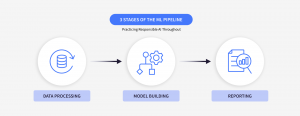
Responsible AI in Data Processing
Data is a reflection of the world, so it stands to reason that it will carry built-in biases in various forms. It’s important to be able to explain bias in your data. Biased data can come from an imbalance of data from bad collection practices or it can be from a human input into data that reinforces social biases. In both of these instances, this means that there are sensitive correlations that are not inherently obvious and must be addressed. Additionally, there exists a danger of proxy variables in many datasets.
Practitioners can mitigate the impact of bias through proper identification and action. To uncover bias that has been proliferated through the ways mentioned above, practitioners can use traditional statistics to measure bias and correlation as well as conduct a thorough evaluation of the ways in which the data is collected and sourced. Asking domain experts to interrogate high-risk datasets is another important step.
The Model Building Stage
Assuming we have accounted for the bias in the data, we can move on to the model stage where measuring model fairness plays a big role. There are both mathematical and socially-minded components to model fairness. A model that performs well in terms of mathematical fairness will occur when fair predictions are independent of sensitive attributes. Looking to socially-minded fairness, a fair model performs consistently across different groups in such a way that outcomes are aligned with desired intentions. Why does all this matter?
For just one example, in a number of studies, researchers have found that biased data has resulted in biased models in which fewer people of color are flagged as needing extra care from doctors — even with symptoms present worse than those of their white counterparts. Models used by healthcare systems often reinforce existing discrimination even if those models perform well according to standard ML metrics — check out an example on medical bias in the healthcare industry here.
Consider Models With a Responsible AI Outlook
Responsible AI in practice requires a knowledge of the types of model fairness.
- There is group fairness — where the model performs equally on key metrics across groups.
- There is individual fairness — where similar individuals produce equal treatment probabilities.
- Let’s also not forget counterfactual fairness — where altering the sensitive attribute does not change the prediction.
All three types of fairness should be measured for a responsible AI framework.
Sharing Methods Are Just as Important as How We Build Them
Reporting on models comes with a few common challenges. Business users and consumers are quite wary of black-box AI systems, particularly those whose algorithms or inner workings can be difficult to audit and trace. Lack of documentation is also a huge problem. Without proper context and understanding of model inputs, even fair AI can be misused!
To start to move past these challenges, transparent reporting provides model context and individual explanations for given predictions. It also gives end users the opportunity to explore different model outcomes and find actionable recourse. By documenting each stage of the data and model building pipeline it will be easier to review and correct problems when they do pop up.
Zooming Out: AI Governance
We’ve covered the way that responsible AI can improve model building, but these practices are not isolated from the rest of the AI pipeline. The responsible AI framework needs to be grounded in the larger foundation of AI governance.
As we have established already, an AI pipeline is more than an algorithm. From problem definition all the way to model monitoring, we must balance the control and agility of AI models to scale analytics and AI safely. So what exactly is the link between AI governance, MLOps, and responsible AI?
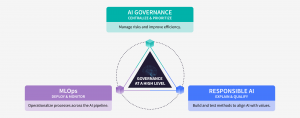
Organizations should infuse responsible values and principles from development all the way to deployment with a carefully designed framework in order to avoid the unintended, harmful consequences of AI failures and effectively scale AI throughout their business processes.
At this point, we’ve defined responsible AI and seen how it relates to AI governance. Now, we’ll explore how partnering with companies like Dataiku can help your organization not only build robust models, but design them in a way that takes into account the principles of responsible AI.
Responsible AI for Generative AI
Generative AI offers significant benefits, but also raises challenges, particularly when it comes to AI hallucinations and the need for responsible deployment practices.
Safeguarding Against AI Hallucinations
One of the key risks with GenAI models is that they can produce hallucinations — outputs that seem plausible but are factually incorrect, misleading, or entirely fabricated. This issue stems from the probabilistic nature of these models, which generate responses based on learned patterns rather than real-time data or verified facts. For instance, a model might convincingly “invent” a citation, attribute a quote to the wrong person, or generate false information about real-world events. While this may be harmless in casual conversation, the implications are more serious in high-stakes fields like healthcare, law, or journalism, where factual accuracy is critical.
Ensuring a Human-in-the-Loop Approach for Responsible AI
Given the potential for errors, adopting a human-in-the-loop approach is crucial for the responsible use of GenAI. Human oversight ensures that outputs from AI are evaluated and corrected before being used in real-world applications. For example, in a medical diagnosis system powered by GenAI, a human expert should validate AI-generated recommendations to ensure that hallucinations do not lead to misdiagnosis or improper treatments.
Building Responsible AI Systems
Developers and organizations need to prioritize responsible AI practices to mitigate risks associated with hallucinations and ensure that generative models are used safely. This includes:
- Transparency: Making it clear when an AI system is being used and when human oversight is in place.
- Training and Validation: Using high-quality, diverse training data to minimize bias and errors while continuously testing the system for accuracy.
- Post-Processing Safeguards: Implementing validation layers where human reviewers can assess AI-generated content for correctness and appropriateness before release.
Go Further
Responsible AI With Dataiku
Remember that responsible AI is a framework that ensures AI output is aligned with your organization’s values. By partnering with platforms like Dataiku, you can build AI systems that are reliable, accountable, fair, transparent, and explainable — all major tenets of responsible AI.
We’ll highlight some of the key features that Dataiku’s responsible AI solutions provide below.
Mitigate Biases up Front
To reduce the risk of biased ML models, you can ensure the correct data preparation methods are being used throughout. This provides a solid foundation for the ML models to be built on. Dataiku’s tools promote the principles of responsible AI: advanced statistical analysis, enhanced data discovery, data quality rules, and guardrails to protect data privacy according to major regulations like GDPR and CCPA.
Improve Model Accuracy
Making sure models are fair can be a difficult task, especially at scale. With Dataiku’s features to improve the accuracy of your responsible AI process, model assertions and subpopulation analysis can help check if predictions for subpopulations meet certain expectations. Additionally, they provide warnings if new model versions don’t work the way you expect them to. Sanity checks for model training helps identify imbalances in your datasets and variations in variable importance.
Detect Issues With Specialized Reports
You can choose metrics to measure bias in your models with fairness reports. These reports include Demographic Parity, Equalized Odds, Equality of Opportunity, and Predictive Rate Parity. Partial dependence plots and subpopulation analysis helps you understand how predictions change at global and regional levels.
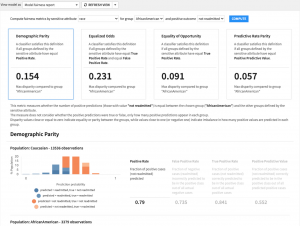
Build Documentation and Visualization
Using what-if analysis and individual prediction explanations, you can help your team understand where your models stand and discover why models are producing certain predictions, publishing interactive analyses to give business users better visibility into model behavior. Teams can leverage model evaluation and monitoring to calculate key model metrics and get notified for specific model errors. You can also automatically generate documentation that includes what the models do, and how they were built, tuned, and performed — all necessary for regulatory compliance and critical for ongoing knowledge management for teams maintaining an AI solution.
Pair Responsible AI With AI Governance
With Dataiku Govern, you’ll build out the right checks and balances without slowing down your analytics or AI teams. Governance teams have criteria that need to be made tangible and measurable — Govern enables analytics and AI teams to align their work with those expectations. Teams can also create standard project plans for the development and deployment of analytics and AI projects, and leverage workflow blueprints with clear steps and gates for review and approvals.
See Your Projects in One Place
You can drive visibility on your projects with Dataiku’s central registry that includes models and analytics projects, all versioned and with performance metrics attached. Project summaries are provided for leaders and project managers. You can also ensure audit readiness on deployment decisions with model sign-off prior to deployment. Responsible AI is one dimension of how we support safely scaling AI with AI governance and MLOps. ML development lifecycle activities and checks can be shared with governance teams to ensure principles are followed.
Get Specialized Help From Dataiku
Dataiku experts are on hand to go beyond the technical aspects of responsible AI, helping you identify areas of opportunity tailored to your company’s needs. In addition to the technical features of Dataiku’s core product, you can be educated on responsible AI, both at a high level and a practical level.
On Your Way With Responsible AI
As we’ve seen, responsible AI isn’t just a necessary response to the rapid growth of AI technologies, but a strong strategic advantage for organizations and industries looking to build trust, scale effectively, and lead with purpose.
Companies without a clear responsible AI strategy can face many risks. These include reduced consumer trust and employee confidence, fines, increased audits and scrutiny, and unclear accountability. All of this can lead to AI dysfunction.
By integrating fairness, accountability, and transparency into the AI design and launch pipeline, companies can mitigate risks, enhance the reliability of their systems, and create more equitable outcomes for both internal and external stakeholders.
Responsible AI, like many other areas in the field of AI and ML, requires a collaborative effort across teams and disciplines, grounded in well-designed frameworks and tools like Dataiku.
